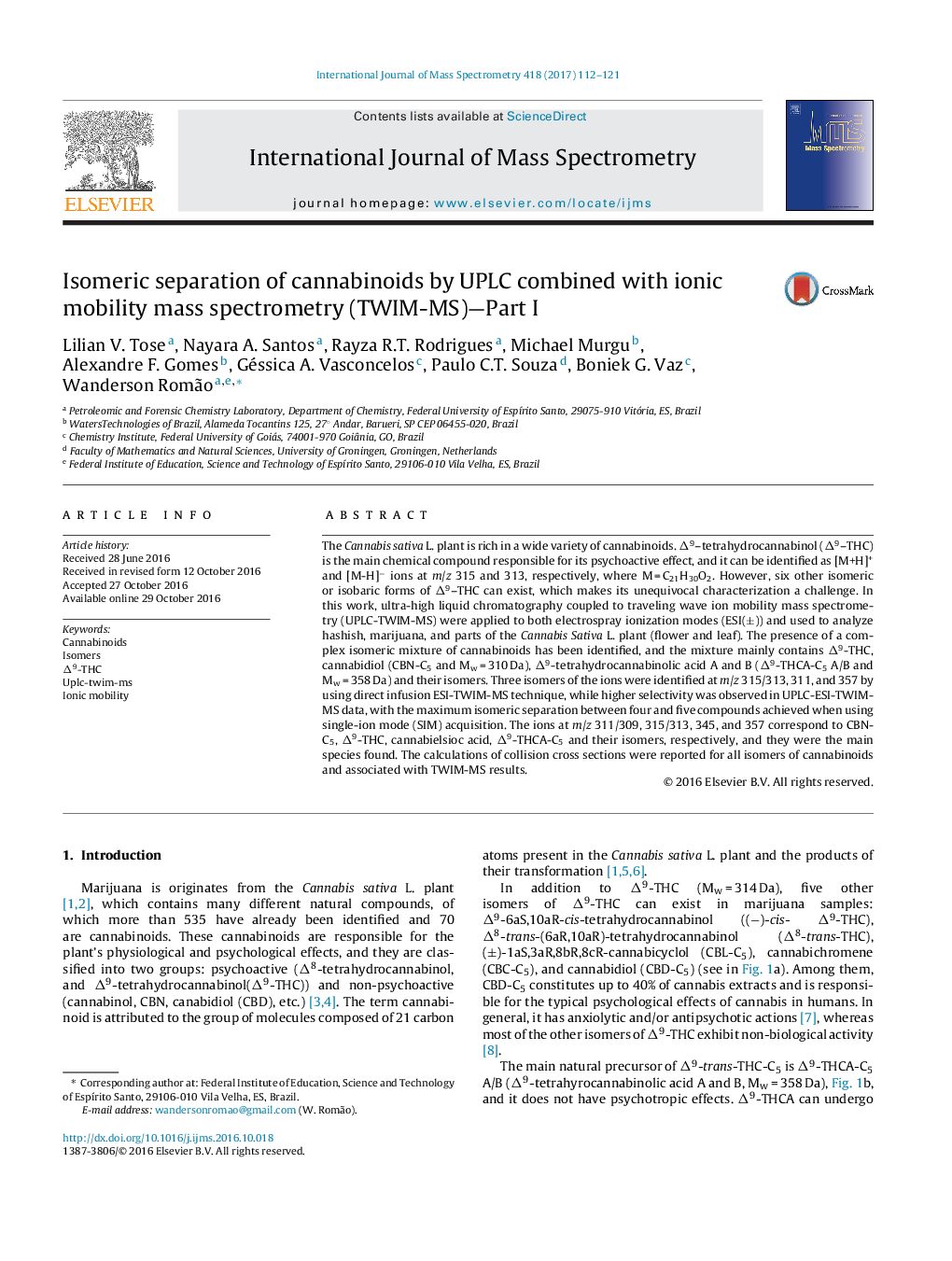| Article ID | Journal | Published Year | Pages | File Type |
|---|---|---|---|---|
| 5134224 | International Journal of Mass Spectrometry | 2017 | 10 Pages |
â¢The Cannabis sativa L. plant is rich in a wide variety of isomers of cannabinoids.â¢Six other isomeric or isobaric forms of Î9-THC can exist, which makes its unequivocal characterization a challenge.â¢UPLC-TWIM-ESI(±)MS was applied to analyze hashish, marijuana, and parts of the Cannabis Sativa L. plant.â¢The presence of a complex isomeric mixture of cannabinoids has been identified for Î9-THC, CBN-C5 and Î9-THCA-C5A/B.â¢The calculations of CCS were reported and results associated with TWIMMS data.
The Cannabis sativa L. plant is rich in a wide variety of cannabinoids. Î9-tetrahydrocannabinol (Î9-THC) is the main chemical compound responsible for its psychoactive effect, and it can be identified as [M+H]+ and [M-H]â ions at m/z 315 and 313, respectively, where M = C21H30O2. However, six other isomeric or isobaric forms of Î9-THC can exist, which makes its unequivocal characterization a challenge. In this work, ultra-high liquid chromatography coupled to traveling wave ion mobility mass spectrometry (UPLC-TWIM-MS) were applied to both electrospray ionization modes (ESI(±)) and used to analyze hashish, marijuana, and parts of the Cannabis Sativa L. plant (flower and leaf). The presence of a complex isomeric mixture of cannabinoids has been identified, and the mixture mainly contains Î9-THC, cannabidiol (CBN-C5 and Mw = 310 Da), Î9-tetrahydrocannabinolic acid A and B (Î9-THCA-C5 A/B and Mw = 358 Da) and their isomers. Three isomers of the ions were identified at m/z 315/313, 311, and 357 by using direct infusion ESI-TWIM-MS technique, while higher selectivity was observed in UPLC-ESI-TWIM-MS data, with the maximum isomeric separation between four and five compounds achieved when using single-ion mode (SIM) acquisition. The ions at m/z 311/309, 315/313, 345, and 357 correspond to CBN-C5, Î9-THC, cannabielsioc acid, Î9-THCA-C5 and their isomers, respectively, and they were the main species found. The calculations of collision cross sections were reported for all isomers of cannabinoids and associated with TWIM-MS results.
Graphical abstractDownload high-res image (144KB)Download full-size image
